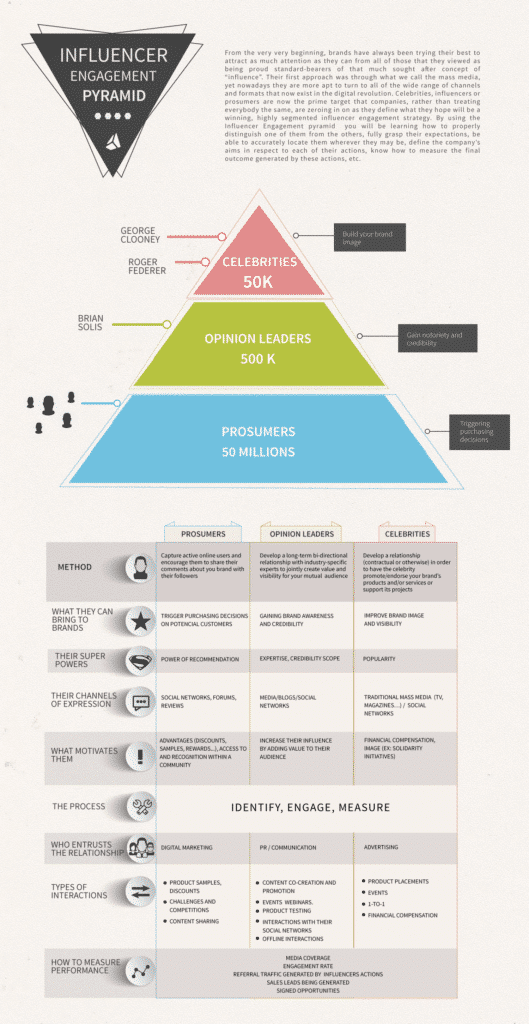Much has been said about influencers and brands over the last few months, mainly about how brands are leveraging the opportunities provided by these people to make their product and/or services reach a broader and yet more segmented target group.
Much has been said about influencers and brands over the last few months, mainly about how brands are leveraging the opportunities provided by these people to make their product and/or services reach a broader and yet more segmented target group.
Based upon the findings from our 2014 Influencer Marketing Report, we feel that not all influencers have the same influence.
For instance, would you call Justin Bieber an influencer? What about Brian Solis? The fact is that each person may have a certain degree of influence and provide different advantages to a brand.
Because of this, it’s crucial to compare one group with another. We have developed our own theory to categorize influencers with our Influencer Engagement Pyramid:
In this article you’ll learn…
Why is it essential to take influencers into account?
Consumer trust in brands continues to drop according to the Edelman Trust Barometer Report. So, how can brands regain the trust of consumers? We have seen that the “more independent” an author is, the more that people trust them.
Furthermore, we all are much more likely to believe someone who is part of our “circle of friends.” Wouldn’t you be more likely to trust the advice of a friend as opposed to that of a stranger? An influencer plays this role: a bridge between a brand and their consumer, like a “common connection.”
Influencer Engagement Pyramid
Our study on Influencer Marketing explains the three main challenges of marketing and communication professionals in relation to influencers:
- IDENTIFY their target influencers
- ENGAGE their influencers to create campaigns
- MEASURE their influencer marketing actions
We have developed this Influencer Engagement Pyramid to respond to these challenges in relation to specific methodologies for each influencer profile:

